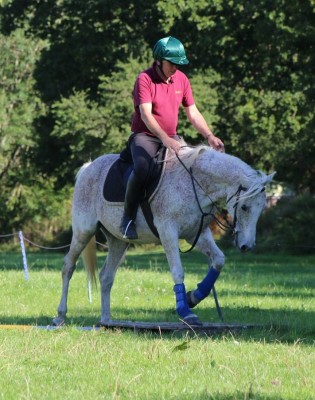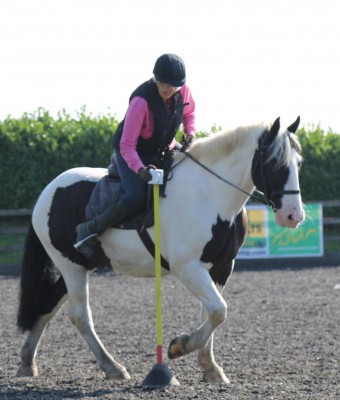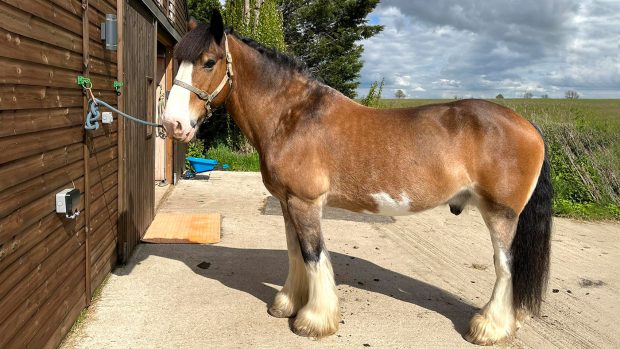The weeks seem to have flown by since my last blog. I have had a great time taking camps and clinics around the country; in fact it feels like I have covered all corners of England in the last month!
Last weekend saw me a lot closer to home, conducting a three-day your horsemanship camp (pictured) at the yard for fifteen people and their horses.
After some torrential rain the first night, we were lucky to have the sun shining and the ground drying out for the rest of their stay. These camps are firmly aimed at the recreational rider who is looking to improve their foundations with their horse. It’s great to see their confidence grow over the three days and try things they didn’t think possible, even if that is something that some of us take for granted such as cantering across an open field without the fear of being taken off with!

Back on the yard at home not only have I had some lovely horses to start, there are some interesting remedial cases to work on too.
In the past month I have had a few dressage horses in that have rearing problems. All of these horses have had quite a “downhill” way of going, most likely to do with a  combination of their natural conformation and their training and I believe this is one of the main causes of their rearing habit.
combination of their natural conformation and their training and I believe this is one of the main causes of their rearing habit.
If a horse is “downhill” (i.e. he leans on the bit and is on the forehand rather than taking his weight on his hindquarters), two things occur. Firstly, the horse is not truly balanced and therefore will not settle into their way of going, which can lead to them becoming anxious at times. Secondly, riders tend to respond to their horse being “downhill” by trying to pull them into a more “uphill” way of going while trying to keep them going forward at the same time. This creates a block at the poll that on one end of the scale can result in the horse becoming stiff but at the other end can lead to rearing.
With the retraining process, I start by making sure I can control the rear by being able to move the hind end independently. This makes the horse more safe to ride but in order to fix the problem, it is a question of going back to developing relaxation, balance and rhythm without interference from the rider. Only then should you begin to reestablish the contact and a more collected way of going.
Demo season
I have two main “seasons” when I do a number of demonstrations; in the spring months  and in the autumn. Last saturday I was at Willow Farm Equestrian Centre doing a demonstration for the BHS East Kent branch where I worked with a hunter on his groundwork and a horse that had developed a habit of spinning away when refusing a fence.
and in the autumn. Last saturday I was at Willow Farm Equestrian Centre doing a demonstration for the BHS East Kent branch where I worked with a hunter on his groundwork and a horse that had developed a habit of spinning away when refusing a fence.
It was a lovely evening and I was able to get back and watch a recording of the Australia v England rugby match before anyone told me the result!
In a couple of weeks time I am heading up to Aintree to take part in the BHS Welfare Conference, which will not only allow me to listen to some fantastic speakers, but will also give me the opportunity to work with some horses in front of an expert crowd and hopefully get some constructive feedback. Then in November I’m really looking forward to being back at Your Horse Live, which is becoming like a second home to us!
A couple of days before this I am working alongside performance psychologist Charlie Unwin providing a training day for Jardine Lloyd Thompson, one of the world’s leading insurance companies. We use horses to develop the managerial and leadership skills of a company’s potential young leaders. I really enjoy this work and find it fascinating how much business people can learn from working with equines.
Jason



